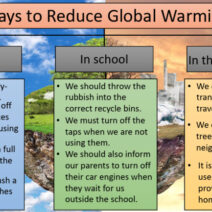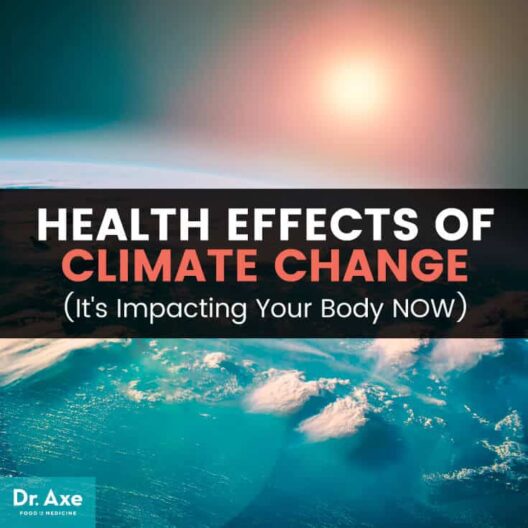In recent decades, climate change has emerged as a paramount threat to ecosystems and the myriad forms of life they support. The implications of rising temperatures, shifting rainfall patterns, and other climatic alterations are profound, with ripple effects that reverberate throughout the natural world. This comprehensive examination delves into the multifaceted ways in which climate change impacts biodiversity across the globe, highlighting the urgent need for conscientious stewardship of our planet.
Climate change manifests itself through various phenomena, including temperature increases, sea-level rise, altered precipitation patterns, and increased frequency of extreme weather events. Together, these factors can fundamentally disrupt the delicate balance of ecosystems, leading to a cascade of adverse effects on species, habitats, and ecological interactions.
Understanding these effects is crucial for developing strategies aimed at mitigating the consequences of climate change and preserving the rich diversity of life that the Earth harbors.
Altering Habitats: A New Reality
As global temperatures rise, many species are experiencing habitat loss or significant alteration. Habitats that once thrived under specific climatic conditions may become inhospitable due to increasing temperatures. For instance, coral reefs, often referred to as the “rainforests of the sea,” are particularly vulnerable. Even slight increases in water temperature can lead to coral bleaching, a phenomenon that jeopardizes the entire marine ecosystem dependent on these vibrant structures.
Similarly, terrestrial habitats such as forests, wetlands, and grasslands are also undergoing changes. Some regions are becoming drier, transforming lush landscapes into arid deserts. Others are facing increased flooding due to erratic rainfall patterns. This instability creates challenges for species that are unable to adapt quickly to these rapid changes, leading to population declines or local extinctions.
Migration Patterns: The Great Displacement
Climate change is also influencing migration patterns in countless species. Many animals, particularly those in polar and mountainous regions, are moving toward cooler areas to escape the heat. Birds may alter their migratory routes, while marine species shift their ranges poleward in search of suitable habitats.
This phenomenon not only poses a challenge for the displaced species but also affects the ecosystems they inhabit. New arrivals can introduce competition for resources, leading to potential conflicts with resident species. The intricate interplay of species within ecosystems can become disrupted, resulting in unforeseen consequences that threaten overall biodiversity.
Invasive Species: A New Threat Emerges
As climate change alters ecosystems, invasive species are presented with fresh opportunities to thrive. Warmer temperatures and altered precipitation patterns may render some regions more hospitable to non-native plants and animals that outcompete indigenous species. These invasive species can quickly establish themselves, causing further harm to local biodiversity.
The introduction of new species can lead to a decline in native species populations, often resulting in a loss of genetic diversity and an imbalance in ecosystem functions. These changes can have dire consequences for agricultural systems, as well, undermining food security and necessitating costly management interventions to control these invasive populations.
Threatened Species and Extinction: An Accelerating Crisis
The convergence of climate change and habitat destruction is accelerating the extinction crisis. Species like the polar bear, which depend on sea ice for hunting, and the Bengal tiger, reliant on specific forest habitats, are profoundly affected. As their environments shift or disappear, they face dwindling resources and increasing competition for survival.
Amphibians are another group particularly at risk. Sensitive to environmental changes, many amphibian species are declining dramatically due to climate change, habitat loss, and the spread of diseases exacerbated by warmer conditions. Without proactive conservation measures, we risk irrevocably losing these species and their unique contributions to biodiversity.
Pollinators in Peril: A Vital Link at Risk
Pollinators, such as bees, butterflies, and bats, are crucial for the reproduction of many plants, including crops that humans rely upon. Climate change is disrupting their life cycles, affecting their foraging behavior, habitat availability, and overwinter survival. The decline in pollinator populations poses a significant threat not only to natural ecosystems but also to global food systems.
Increased temperatures can lead to mismatches in the timing of flowering plants and the activity of pollinators, resulting in reduced pollination success and, ultimately, lower yields in agriculture. The decline of these vital organisms can create rippling effects throughout ecosystems, showcasing the interconnectedness of climate change and biodiversity.
Building Resilience: Mitigation and Adaptation Strategies
Addressing climate change and its impacts on biodiversity requires a multifaceted approach. Mitigation strategies such as reducing greenhouse gas emissions and transitioning to renewable energy sources are crucial for limiting the extent of climate change. Additionally, adaptive conservation strategies that enhance the resilience of ecosystems are essential. This includes protecting and restoring habitats, creating wildlife corridors, and implementing sustainable land-use practices.
Public awareness and education are also critical components in fostering a culture of conservation. By understanding the relationship between climate change and biodiversity, communities can engage in grassroots efforts to preserve the natural world and promote sustainable practices.
In conclusion, the impacts of climate change on biodiversity are profound and far-reaching. As the Earth’s climate continues to change, the interconnectedness of species, habitats, and ecosystems becomes increasingly evident. The need for comprehensive action to address climate change and protect biodiversity has never been more urgent. It is imperative that we work collectively to safeguard the planet’s rich tapestry of life for future generations, understanding that the health of our ecosystems directly correlates with our own well-being.





